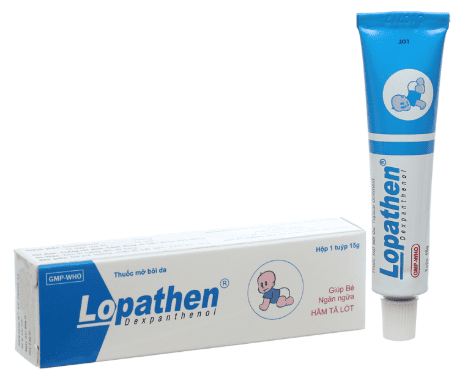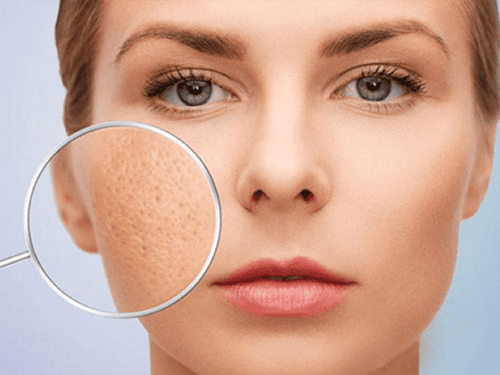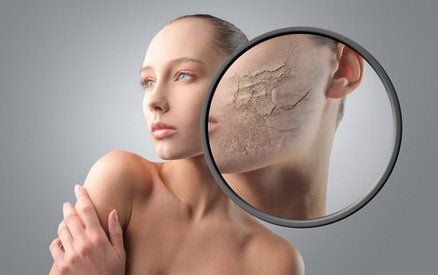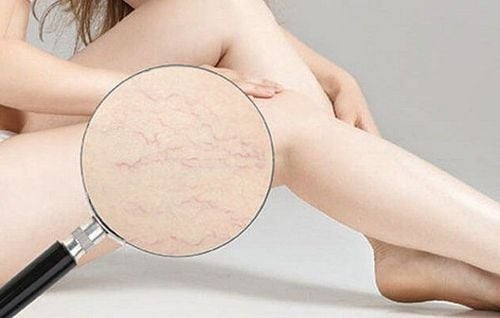This is an automatically translated article.
Stretch marks are common in pregnant women. However, nowadays even teenagers in puberty can get this condition. This is due to the rapid development and growth of the child's body, or from overweight or obesity in the child.
1. What are pubertal stretch marks?
Stretch marks occur when the tissues under the skin are stretched due to rapid growth or weight gain.
Although our skin is normally quite elastic, being overstretched can disrupt normal collagen production. Collagen is a protein that holds connective tissues together. If the growth process happens suddenly, it will make collagen production not catch up in the dermis layer of the skin. This leads to the development of scars or lines that look like scars in the top layer of the skin, commonly known as stretch marks.
Stretch marks can start out in a variety of colors, such as red, pink, purple or brown, then fade over time and leave a thin silver line or may be faint that is not easily noticeable. . In the early stages, you may feel an indentation in your skin as you run your finger over the stretch mark.
In fact, stretch marks are a normal phenomenon of puberty, occurring in both men and women. Puberty often causes a person to grow or gain weight rapidly, causing stretch marks on the body. Most of the stretch marks in girls going through puberty are concentrated mainly on areas such as breasts, thighs, hips and buttocks. In particular, the risk of stretch marks in women tends to be higher than in men.

Rạn da thường xảy ra ở nữ giới trong độ tuổi dậy thì
2. What causes stretch marks during puberty?
Stretch marks can appear:
When girls or boys have a sudden growth spurt during puberty. Pregnancy When obesity causes excessive accumulation of body fat When children do exercises that help improve fitness, or build body Children on steroids for a health condition for a few weeks, for example such as severe asthma For women and girls, stretch marks can appear on the breasts, thighs (especially the top of the thighs), hips, abdomen, and buttocks. In addition, boys can also develop stretch marks in those areas, especially if they are obese, or if they lift weights regularly to develop larger rapidly growing muscles.
3. Can you avoid stretch marks?
In fact, you can't avoid getting stretch marks during puberty. Many people can experience this problem, but many others do not get stretch marks even if they are overweight or grow rapidly.
On the other hand, your genes play an important role in determining whether you get stretch marks or not. Even if you have a slim, fit and healthy body, even using a lot of moisturizer, you are still likely to get stretch marks. The reason why moisturizers can't be effective is because stretch marks occur under the top layer of skin where creams can't reach.

Gen đóng vai trò quan trọng trong việc quyết định tình trạng rạn da của bạn
4. Does puberty stretch marks go away?
Over time, the initial red or purple stretch marks will fade away until they become faint silver lines that are less noticeable or may not be visible.
In fact, stretch marks won't disappear completely, but you can still make them less noticeable through the following ways:
Try using a concealer that matches your skin tone. you to cover stretch marks. Some concealers have very good coverage and are water resistant. However, using concealer will not be an effective solution if you spend a lot of time underwater. Wear rash protection. Specially designed bathing suits often have high coverage, helping you to effectively hide stretch marks on your buttocks, upper thighs and chest. Many people use tanning beds or non-sun tanning beds to cover stretch marks. However, this often doesn't work because stretch marks are less likely to fade, and even become more visible. Plus, tanning beds do more harm than good to your skin's long-term health. In general, you won't be able to make stretch marks go away completely without the help of a dermatologist or plastic surgeon. Your doctor will use one of many treatments, from actual surgery to techniques like microdermabrasion and laser treatment, to reduce the appearance of stretch marks.
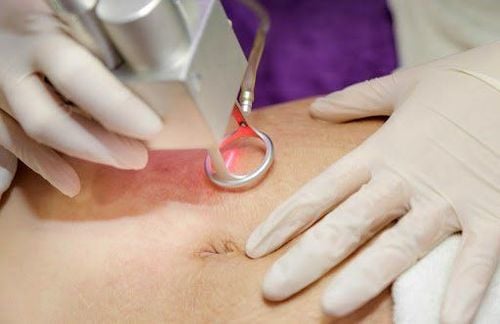
Bác sĩ sử dụng liệu pháp laser CO2 trong điều trị rạn da
However, these techniques are often costly and carry a certain degree of risk. Therefore, doctors usually do not recommend them for teenagers because their bodies have not really fully developed in all aspects, so new stretch marks can still appear, while existing ones can be. will decrease over time.
5. How to prevent pubertal stretch marks?
To prevent stretch marks at puberty, young people should focus on taking good care of their bodies. This usually includes eating healthy, being active, taking care of your skin and getting enough sun protection.
You should regularly exercise about 30 minutes a day. This is not only a healthy weight loss measure, helping you maintain a balanced figure, repel diseases, but it also helps increase skin elasticity, making the skin firmer. As a result, it minimizes the appearance of ugly stretch marks on the body.
If you have a need for consultation and examination at Vinmec Hospitals under the nationwide health system, please book an appointment on the website for service.
Please dial HOTLINE for more information or register for an appointment HERE. Download MyVinmec app to make appointments faster and to manage your bookings easily.
Reference sources: cyh.com, kidshealth.org



